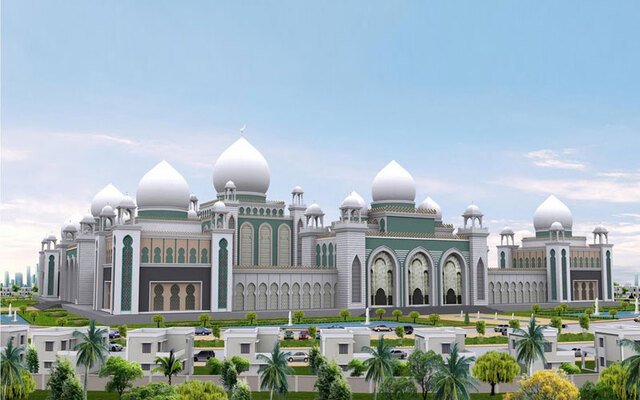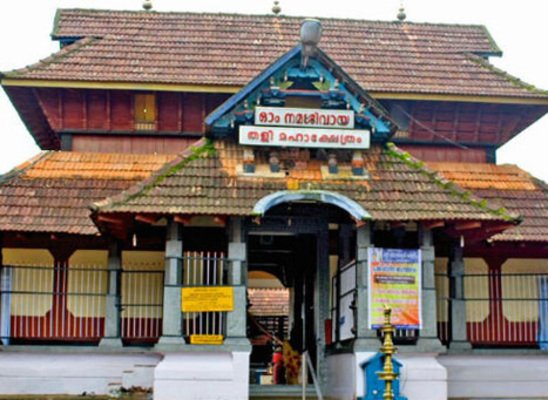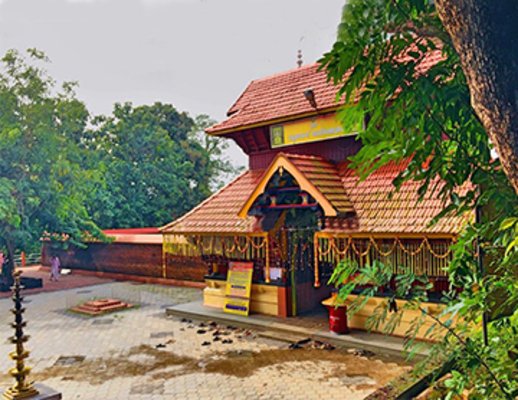Kozhikode County has Hindu, Chrisian, and Islamic people living in communal harmony. For the people of every relogious community there are various pilgrims in Kozhikode.
Shahre Mubarak Grand Masjid

Because Shahre in Arabic means hair and Mubarak means blessed, the name Shahre Mubarak Grand Masjid translates The Grand Mosque of the Blessed Hair. Calicut, Kerala, is home to India’s largest mosque, which is currently under construction. It is being built under the auspices of Markazu Ssaquafathi Ssunniyya, a religious and charitable institution in South India that assists destitute Muslims and orphans in the areas of education, social and cultural issues, and Kanthapuram AP Aboobaker Musalyar, the head of the Sunni Muslims in South India. According to Sunnis, the remainder of the Prophet Muhammad’s hair will be kept in the mosque. The largest mosque in India, with a floor size of 250, 000 square feet, will be able to accommodate a large audience of 25000 people when it is finished.
Tali Temple

The Tali Temple in Kozhikode was established in the 14th century as part of the palace complex of the then-reigning Zamorin, Swamy Thirumulpad. The temple is known for its yearly festival, Revathi Pattathanam, which takes place in the Malayalam month of Thulam (mid-October to mid-November) and is a cultural and intellectual seven-day celebration. The temple has magnificent wood carvings, exquisite wall murals, and intricately designed roofing. The sanctum sanctorum’s (sreekovil) walls are shaped like a chariot and have brass patterns and fresco paintings. The temple is a real architectural marvel, a great example of the harmony established between wood and laterite, a notable aspect of the Kerala style of building.
Lokanarkavu Temple

A temple dedicated to the courageous heroes and heroines of the Vadakkanpattu or northern ballads of old can be found in the Kozhikode district. The goddess Lokanarkavilamma is said to have been a devotee of the legendary hero Thacholi Othenan. The temple devoted to Goddess Durga is well-known for its close ties to the heroic heroes and heroines of northern tales. The temple’s wall murals are very well-known. The Kerala Archaeology Department has designated the temple as a protected historic monument because of these amazing murals that date back centuries. The paintings represent gods and goddesses and are exquisitely drawn in natural colours. They also have sensual art, which is uncommon in temples in northern Kerala. The Aryans who migrated to Kerala are said to have built Lokanarkavu as their family shrine. Their descendants still have special rights in this country. At this temple, Thacholikkali, a synthesis of several art forms such as Kathakali, Kolkali, and Velakali, is performed exclusively.
Mother of God Church

The Mother of God Cathedral, also known as Valiya Palli in Kozhikode, is located near Beach Road. The church serves as the seat of the Malabar Roman Catholic community. The Mother of God Church, built in the Roman architectural style and located near Beach Road in Kozhikode, dates back to 1513 AD and is the only one of its like in Kerala. The wall of the 18th century Gothic cathedral built by Christian missionaries features a 200-year-old image of St. Mary. This Gothic-style cathedral was designed by Italian architects who were sent to Kozhikode for the specific purpose of designing it. The curved arches over the doors and windows, the column on the spires, and many other architectural wonders testify to the Italian architects’ aesthetic sense as well as the Indian craftsmen’ artistic prowess. A 200-year-old image of St Mary on the church’s wall is another draw. The adjacent cemetery is kept in good condition. Here you can observe the monument of Pedro de Covilhany, the first Catholic Missionary to visit Kozhikode.
Mishkal Palli Mosque

Mishkal mosque, a four-story mosque in Kuttichira, has been in existence for over 650 years. It was built by an Arab trader named Nakhooda Mishkal, who was given the name Nakhooda Mishkal. The Mishkal mosque was originally five storeyed and made of wood. However, during a Portuguese attack in 1510, it was damaged by arson. The mosque exists today as a prime example of communal cooperation, despite the fact that it was the Zamorin, a Hindu king, who avenged his Muslim subjects by restoring the mosque.
Azhakodi Devi Temple

Azhakodi Devi Temple (also known as Azhakodi Devi Mahashekthram) is one of the most old and renowned Devi temples, located in the centre of Kozhikode city in Thiruthiyadu. Brahamani, maheshwari, kowmari, vaishanavi, vaarahi, indarni, and chamundi are the other seven maternal incarnations, with Bhadrakali as the ruling god. In the temple grounds, there is also a Shivalinga, which is widely adored. The temple is Kerala’s only remaining place of worship with two Devis as the primary goddesses. The shrine’s annual nine-day celebration begins with a kodiyettam (ceremonious flag raising) on the Utrattathi asterism in the Malayalam month of Medam (mid-April – mid-May) and concludes with an arattu on the Punartham asterism (ceremonial bath of the deity).
Valayanad Devi Temple

The Zamorins erected the Valayanad Devi Temple in the 14th century, and it is one of Kozhikode’s most recognised holy destinations to visit. The temple is a marvel of Dravidian architecture from the 14th century, and it stands out among the numerous temples in the neighbourhood. The Zamorins conquered the great King Valluva Kolathiri, according to legend, and they felt it was because of the graces of their family god Valayanad Vagabathi. The Sreechakra, a main attraction of the temple, is built in the classic Dravidian style of architecture. This sreechakra, designed by Sivayogi Thayyavur Sivasankar, is placed in the sanctum sanctorum, which is thought to be the Goddess’s permanent dwelling. On the southern walls of the sanctum sanctorum are carvings of Sapthamathrukkal (seven mother Goddesses). Aside from Shiva, Thevaara Bhagavathi, Lord Ayyappa, and Vigneswara, Ksethrapaalan, the temple also has idols of Shiva, Thevaara Bhagavathi, Lord Ayyappa, and Vigneswara, Ksethrapaalan (Lord Subrahmanya).
